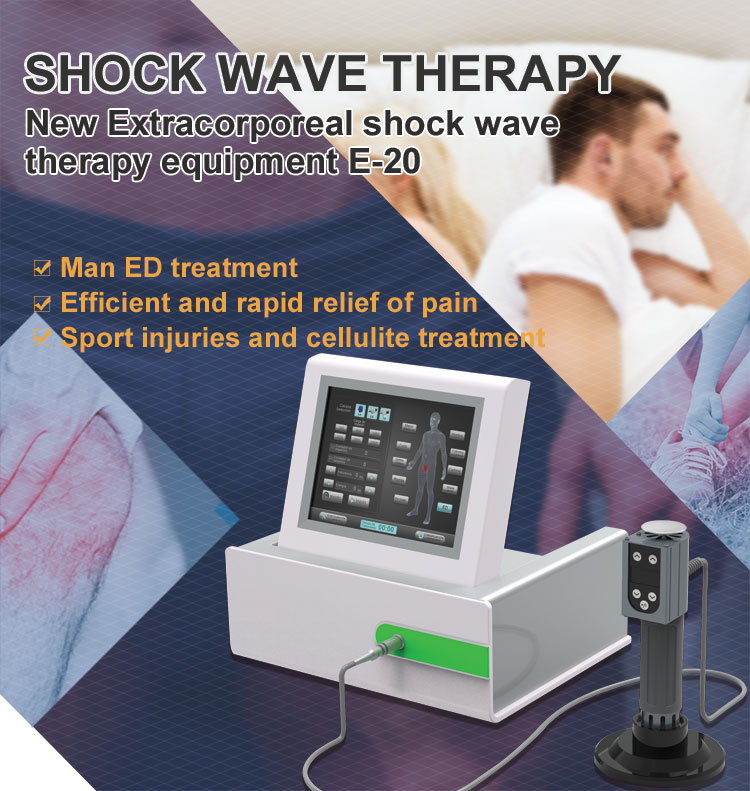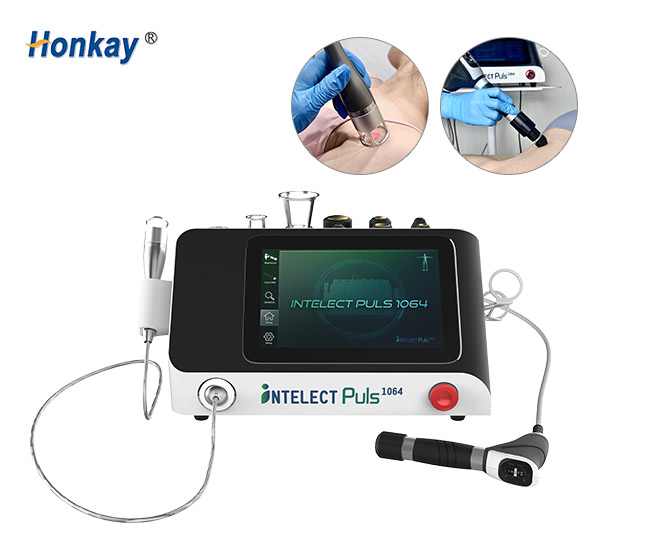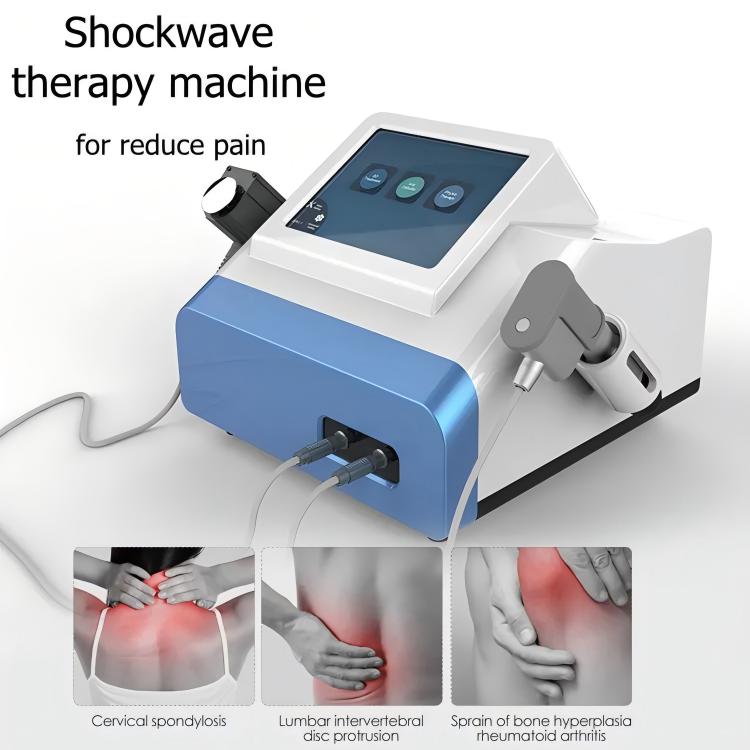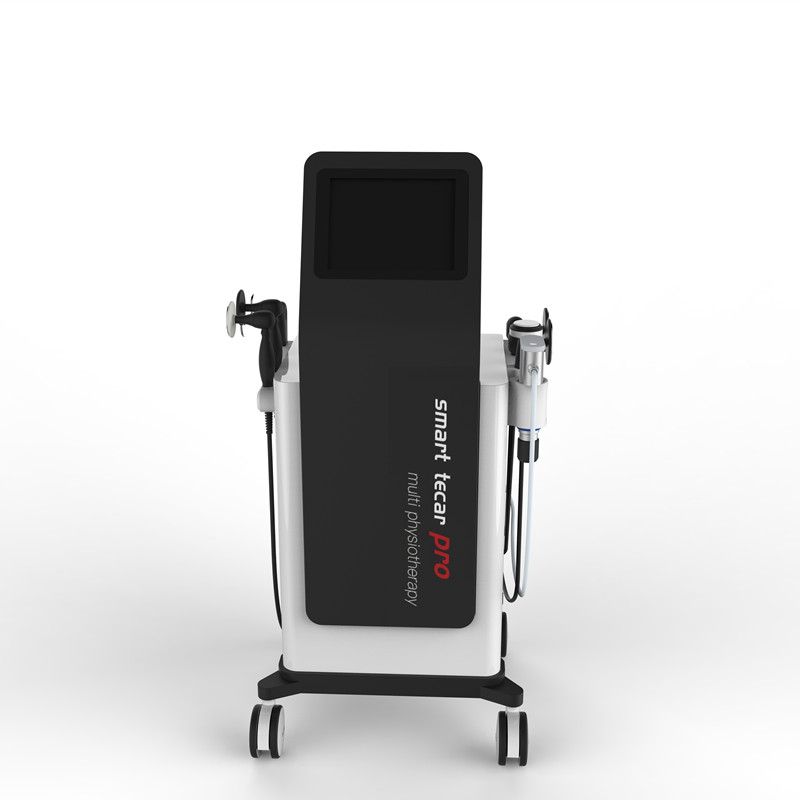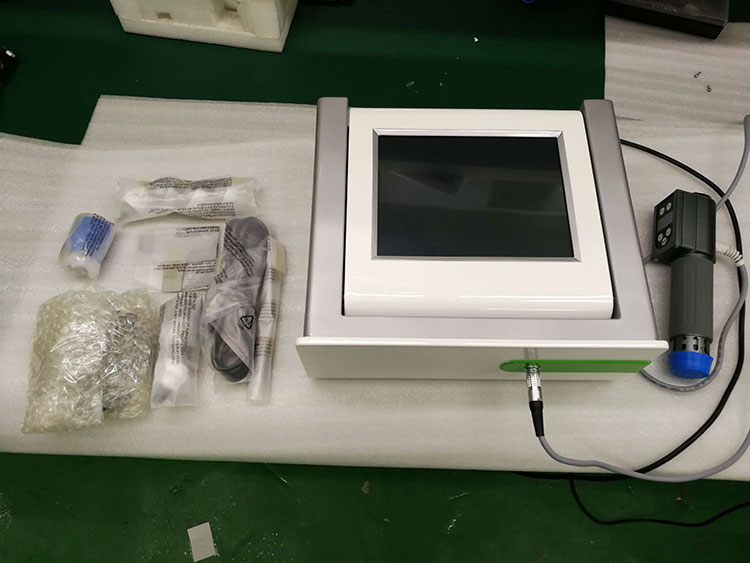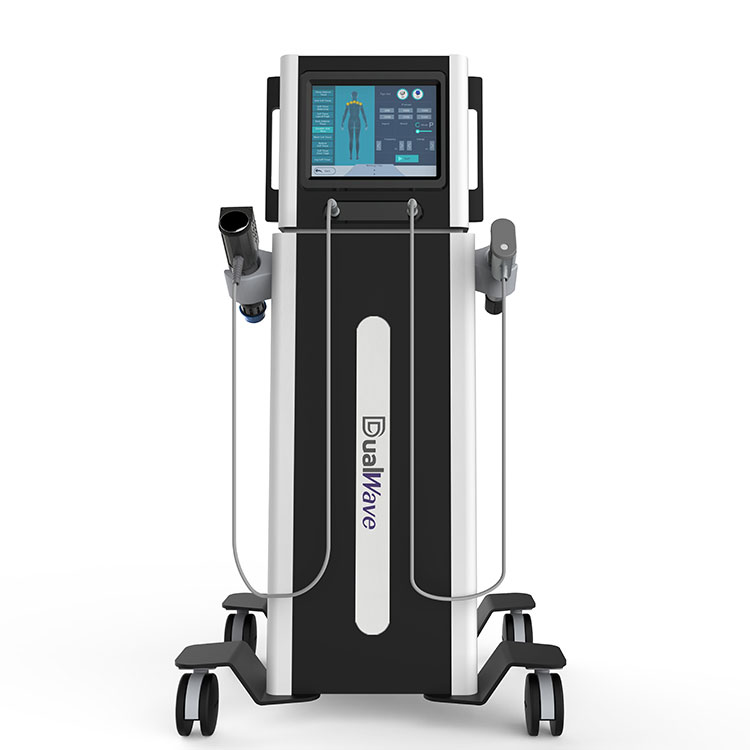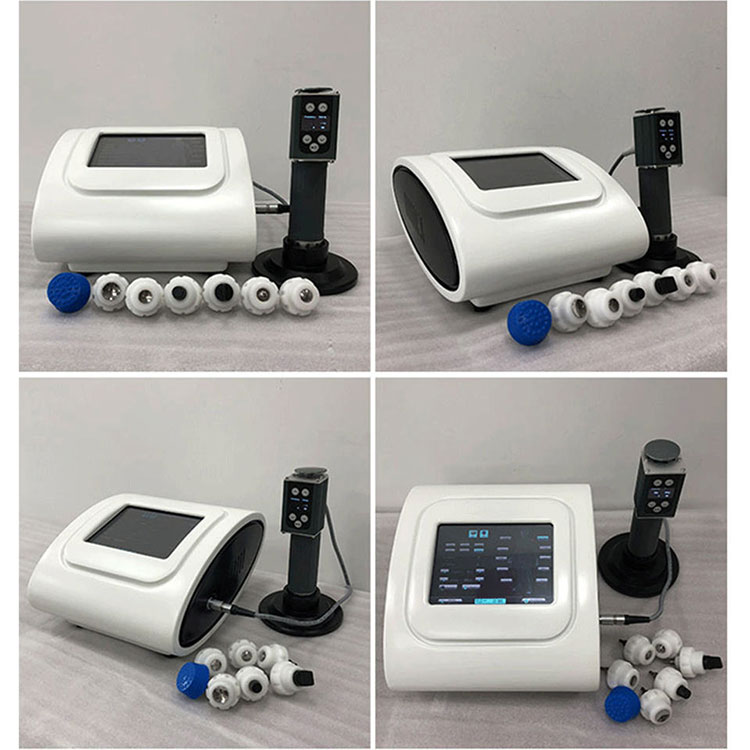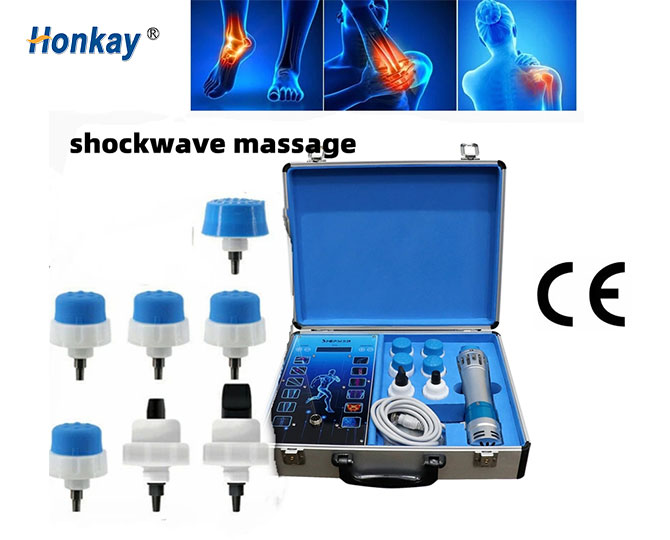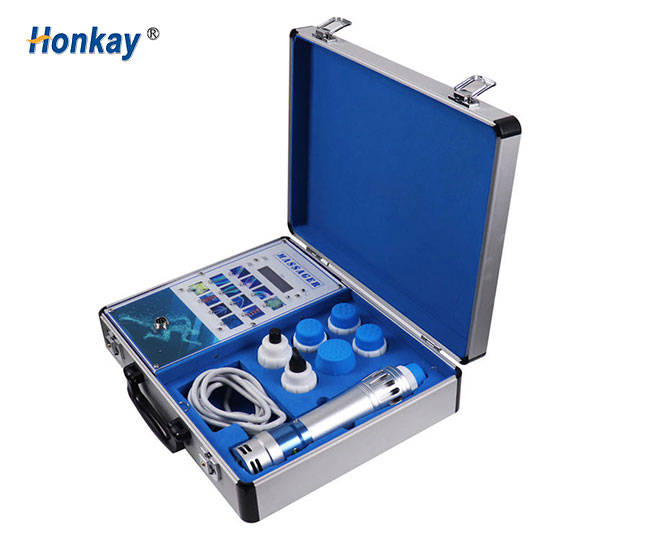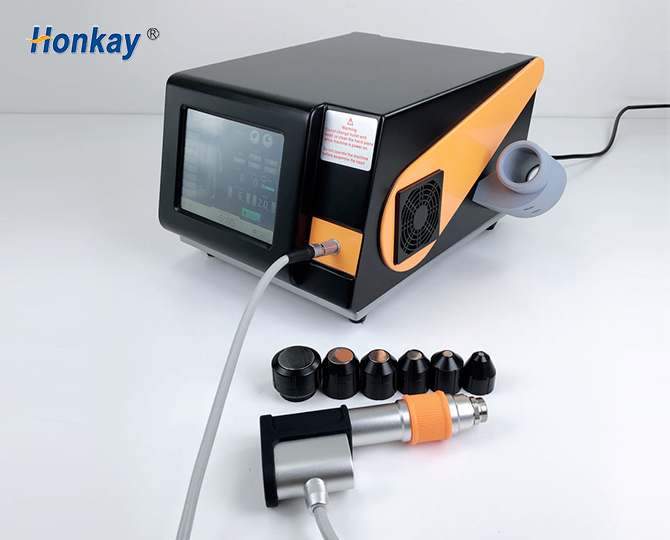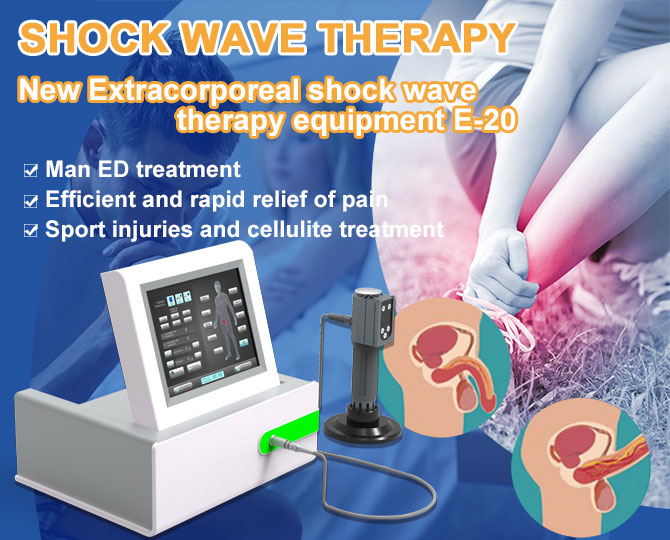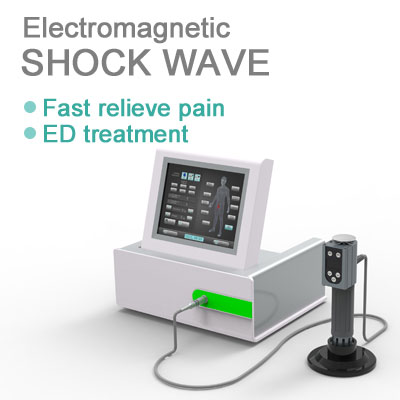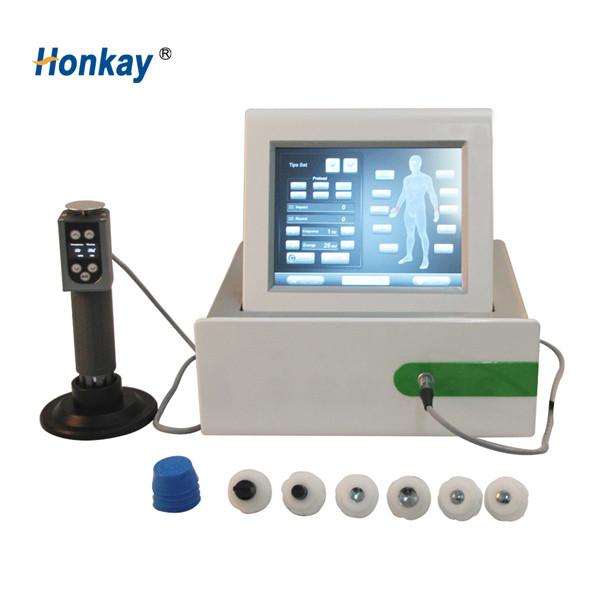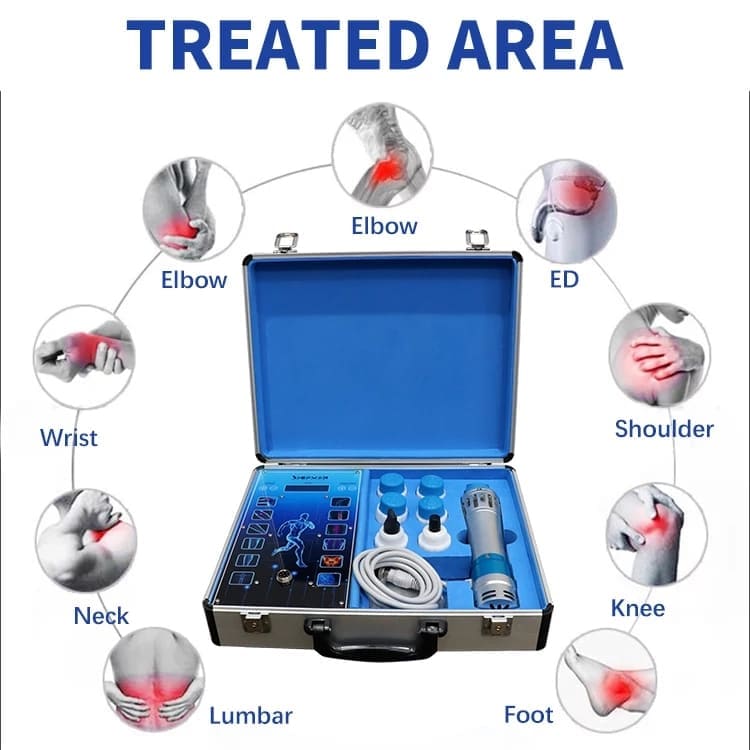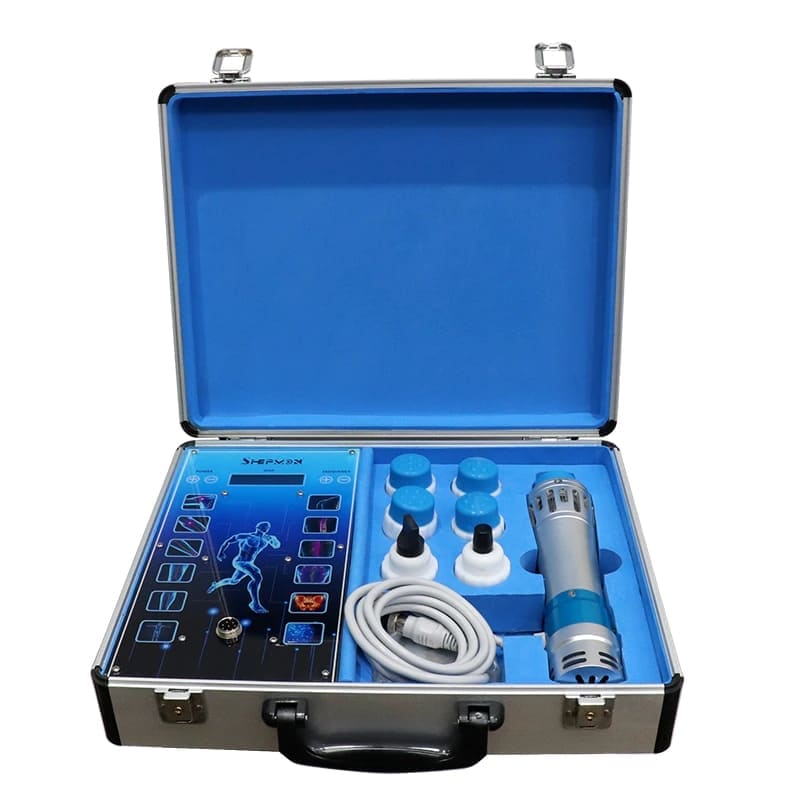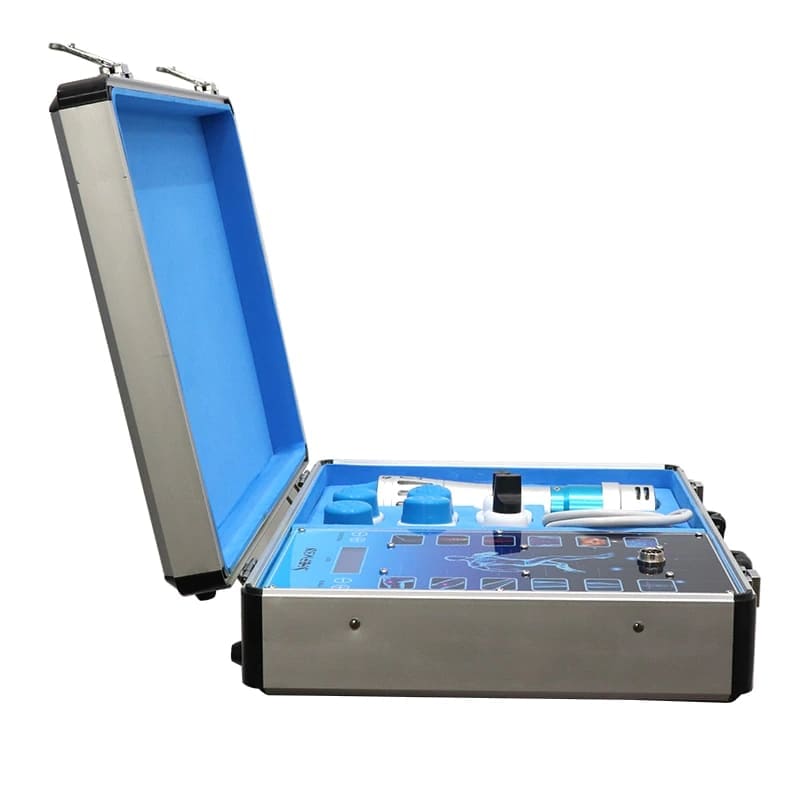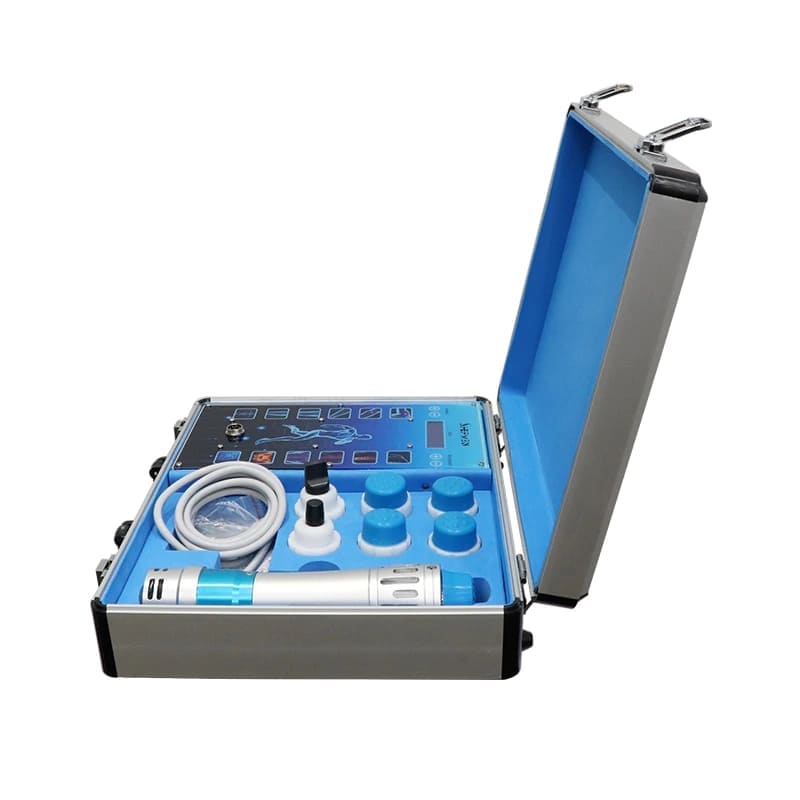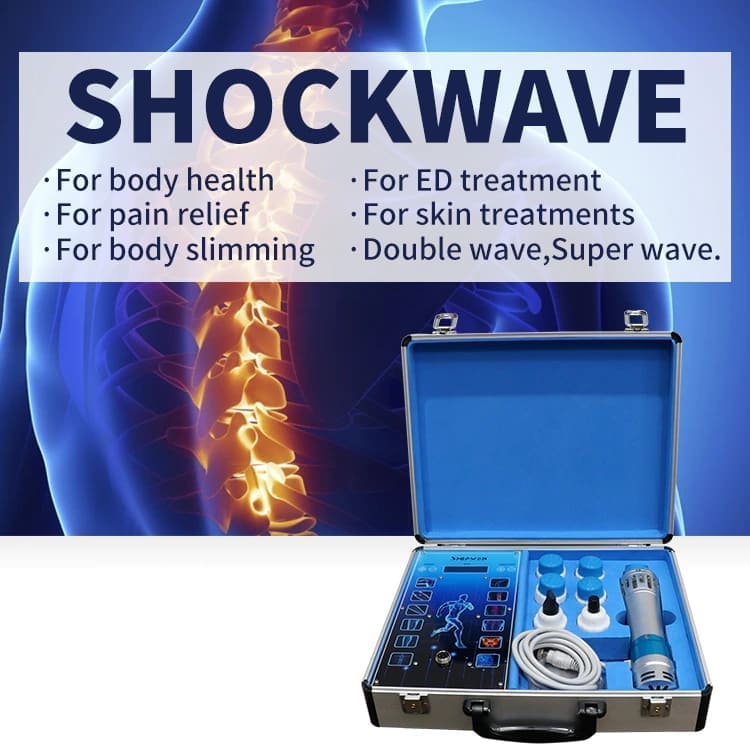7-head portable shockwave physio therapy machine
How to Use Shockwave Physical Therapy Machine
1.Assessment and Diagnosis: Before initiating shockwave therapy, a thorough assessment of the patient’s condition is conducted by a qualified healthcare provider. This may involve a physical examination, medical history review, and possibly diagnostic imaging such as X-rays or MRI scans to accurately diagnose the underlying musculoskeletal problem.
2.Treatment Planning: Based on the assessment findings, the healthcare provider develops a treatment plan tailored to the patient’s specific needs. This plan may include shockwave therapy as a standalone treatment or in combination with other modalities such as exercise, stretching, or manual therapy.
3.Preparation of the Patient: The patient is informed about the procedure, including what to expect during the treatment session, potential benefits, and any possible risks or side effects. They may be advised to wear comfortable clothing and to refrain from applying lotions or oils to the treatment area.
4.Application of Shockwaves: During the treatment session, the patient is positioned comfortably, and the healthcare provider applies a conductive gel to the skin in the area to be treated. This gel helps to transmit the shockwaves efficiently to the underlying tissues. The shockwave device is then applied to the skin, and the shockwaves are delivered to the targeted area through the applicator.
5.Adjustment of Settings: The intensity and frequency of the shockwaves may be adjusted based on the patient’s tolerance and response to the treatment. The healthcare provider carefully monitors the patient’s feedback and adjusts the settings as needed to optimize the therapeutic effect while ensuring patient comfort.
6.Post-Treatment Care: After the shockwave therapy session, the patient may experience some mild discomfort or soreness in the treated area, which is typically temporary. The healthcare provider may provide post-treatment instructions, including recommendations for activity modification, ice application, and any necessary follow-up appointments.
7.Follow-Up and Monitoring: Depending on the patient’s response to treatment, additional shockwave therapy sessions may be scheduled as part of the overall treatment plan. The patient’s progress is monitored, and adjustments to the treatment plan are made as necessary to achieve the desired therapeutic outcomes.

